- Clone
- MEM-188 (See other available formats)
- Regulatory Status
- RUO
- Workshop
- VI NK26
- Other Names
- NCAM, Leu-19, NKH1
- Isotype
- Mouse IgG2a, κ
- Ave. Rating
- Submit a Review
- Product Citations
- publications
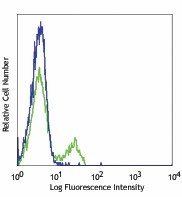
-

Human peripheral blood lymphocytes stained with MEM-188 Pacific Blue™
CD56 is a single transmembrane glycoprotein also known as N-CAM (Neural Cell Adhesion Molecule), Leu-19, or NKH1. It is a member of the Ig superfamily. The 140 kD isoform is expressed on NK cells and NK-T cells. CD56 is also expressed in the brain (cerebellum and cortex) and at neuromuscular junctions. Certain large granular lymphocyte (LGL) leukemias, small-cell lung carcinomas, neuronal derived tumors, myelomas, and myeloid leukemias also express CD56. CD56 plays a role in homophilic and heterophilic adhesion via binding to itself or heparin sulfate.
Product DetailsProduct Details
- Verified Reactivity
- Human
- Reported Reactivity
- Cow, Pig
- Antibody Type
- Monoclonal
- Host Species
- Mouse
- Immunogen
- KG-1 human acute myelogenous leukemia cell line
- Formulation
-
test size: Phosphate-buffered solution, pH 7.2, containing 0.09% sodium azide and BSA (origin USA).
µg size: Phosphate-buffered solution, pH 7.2, containing 0.09% sodium azide. - Preparation
- The antibody was purified by affinity chromatography, and conjugated with Pacific Blue™ under optimal conditions.
- Concentration
- µg sizes: 0.5 mg/mLtest sizes: lot-specific (to obtain lot-specific concentration, please enter the lot number in our Concentration and Expiration Lookup or Certificate of Analysis online tools.)
- Storage & Handling
- The CD56 antibody solution should be stored undiluted between 2°C and 8°C, and protected from prolonged exposure to light. Do not freeze.
- Application
-
FC - Quality tested
- Recommended Usage
-
Each lot of this antibody is quality control tested by immunofluorescent staining with flow cytometric analysis.
For test size, the suggested use of this reagent for immunofluorescent staining is 5 µl per million cells in 100 µl staining volume or 5 µl per 100 µl of whole blood.
For µg size, the suggested use of this reagent for immunofluorescent staining is ≤2.0 µg per million cells in 100 µl volume or 100 µl of whole blood.
It is recommended that the reagent be titrated for optimal performance for each application.
* Pacific Blue™ has a maximum emission of 455 nm when it is excited at 405 nm. Prior to using Pacific Blue™ conjugate for flow cytometric analysis, please verify your flow cytometer's capability of exciting and detecting the fluorochrome.
Alexa Fluor® and Pacific Blue™ are trademarks of Life Technologies Corporation.
View full statement regarding label licenses - Excitation Laser
-
Violet Laser (405 nm)
- Application Notes
-
Additional reported applications (for the relevant formats) include: immunoprecipitation, immunohistochemical staining of formalin-fixed paraffin-embedded tissue sections, and Western blotting (non-reducing).
-
Application References
(PubMed link indicates BioLegend citation) -
- Kishimoto T, et al. Eds. 1997. Leucocyte Typing VI. Garland Publishing Inc. London.
- Product Citations
-
- RRID
-
AB_2282499 (BioLegend Cat. No. 304629)
Antigen Details
- Structure
- Ig superfamily, single transmembrane or GPI-anchored glycoprotein, 175-185 kD
- Distribution
-
NK cells, T subset, neural tissue, some LGL and myeloid leukemias
- Function
- Adhesion
- Ligand/Receptor
- Heparin sulfate
- Cell Type
- Leukemia, Mesenchymal Stem Cells, Neurons, NK cells, T cells
- Biology Area
- Cell Adhesion, Cell Biology, Costimulatory Molecules, Immunology, Innate Immunity, Neuroscience, Stem Cells, Synaptic Biology
- Molecular Family
- Adhesion Molecules, CD Molecules
- Antigen References
-
1. Lanier L, et al. 1991. J. Immunol. 146:4421.
2. Hemperly J, et al. 1990. J. Mol. Neurosci. 2:71.
3. Cremer H, et al. 1994. Nature 367:455. - Gene ID
- 4684 View all products for this Gene ID
- UniProt
- View information about CD56 on UniProt.org
Related FAQs
Other Formats
View All CD56 Reagents Request Custom Conjugation| Description | Clone | Applications |
|---|---|---|
| APC anti-human CD56 (NCAM) | MEM-188 | FC |
| FITC anti-human CD56 (NCAM) | MEM-188 | FC |
| PE anti-human CD56 (NCAM) | MEM-188 | FC |
| PE/Cyanine5 anti-human CD56 (NCAM) | MEM-188 | FC |
| Purified anti-human CD56 (NCAM) | MEM-188 | FC,IHC-P,IP,WB |
| Alexa Fluor® 488 anti-human CD56 (NCAM) | MEM-188 | FC |
| Alexa Fluor® 647 anti-human CD56 (NCAM) | MEM-188 | FC |
| Biotin anti-human CD56 (NCAM) | MEM-188 | FC |
| Pacific Blue™ anti-human CD56 (NCAM) | MEM-188 | FC |
| PE/Cyanine7 anti-human CD56 (NCAM) | MEM-188 | FC |
| PerCP/Cyanine5.5 anti-human CD56 (NCAM) | MEM-188 | FC |
| Ultra-LEAF™ Purified anti-human CD56 (NCAM) | MEM-188 | FC |
Customers Also Purchased

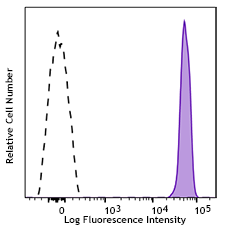
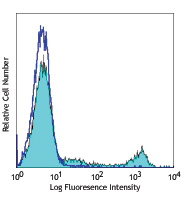
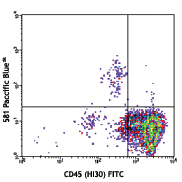
Compare Data Across All Formats
This data display is provided for general comparisons between formats.
Your actual data may vary due to variations in samples, target cells, instruments and their settings, staining conditions, and other factors.
If you need assistance with selecting the best format contact our expert technical support team.
-
APC anti-human CD56 (NCAM)
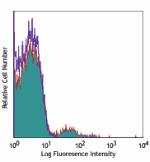
Human peripheral blood lymphocytes stained with MEM-188 APC -
FITC anti-human CD56 (NCAM)
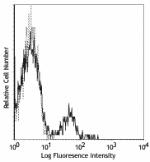
Whole blood lymphocytes stained with MEM-188 FITC -
PE anti-human CD56 (NCAM)
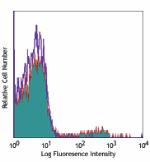
Human peripheral blood lymphocytes stained with MEM-188 PE -
PE/Cyanine5 anti-human CD56 (NCAM)
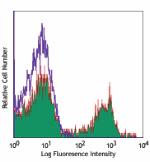
Human peripheral blood lymphocytes stained with MEM-188 PE/C... -
Purified anti-human CD56 (NCAM)
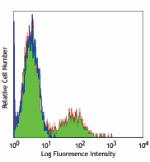
Human peripheral blood lymphocytes stained with purified MEM... -
Alexa Fluor® 488 anti-human CD56 (NCAM)

Human peripheral blood lymphocytes stained with MEM-188 Alex... -
Alexa Fluor® 647 anti-human CD56 (NCAM)

Human peripheral blood lymphocytes stained with MEM-188 Alex... -
Biotin anti-human CD56 (NCAM)
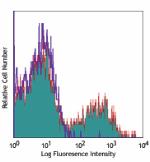
Human peripheral blood lymphocytes stained with biotinylated... -
Pacific Blue™ anti-human CD56 (NCAM)
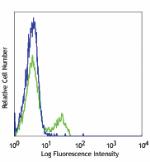
Human peripheral blood lymphocytes stained with MEM-188 Paci... -
PE/Cyanine7 anti-human CD56 (NCAM)
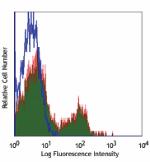
Human peripheral blood lymphocytes stained with MEM-188 PE/C... -
PerCP/Cyanine5.5 anti-human CD56 (NCAM)

Human peripheral blood lymphocytes were stained with CD8 APC... -
Ultra-LEAF™ Purified anti-human CD56 (NCAM)

Human peripheral blood lymphocytes stained with Ultra-LEAF™ ...













Follow Us